Welcome to Queen Bee's Honey House, in the Tunkhannock PA area. The owner of Honey House, Robin Kaminstein, is dedicated to providing the highest quality of honey to her customers. The honey is collected from three apiraries and more than 30 hives and processed by the Honey House staff.
Our focus is on the health and wellness of one of nature's most amazing pollinators, the honey bee. In return our hives are producing some of the area's finest honey.
Queen Bee's Raw Honey comes in three sizes:
9 oz: $ 6.50
22 oz: $12.50
22 oz: $14.50 (Dark Honey, limited availability)
46 oz: $22.50
Check our events to find a market, fair, or show near you to visit and try a sample. And keep an eye on our future plans for exciting news!
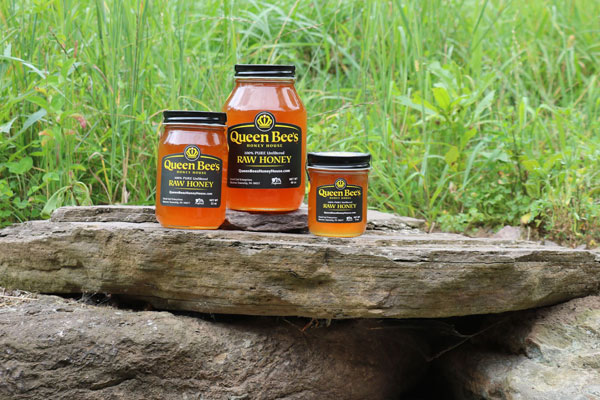
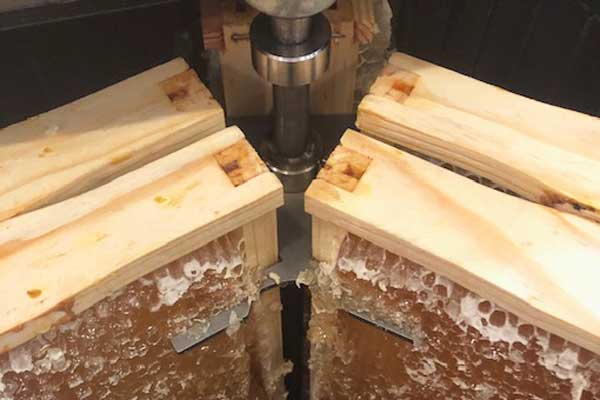
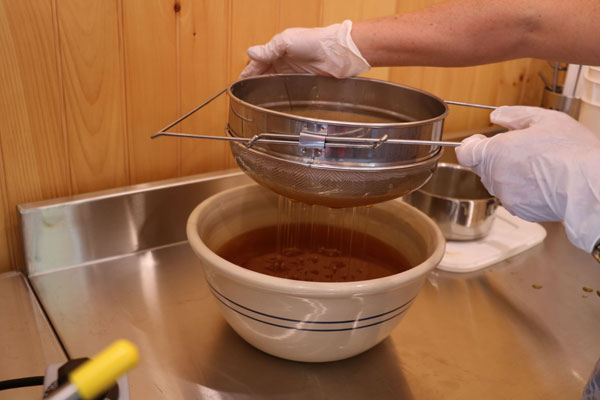
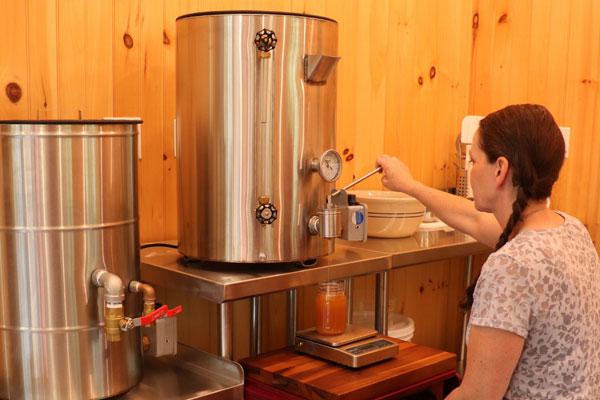
Queen Bee's honey is collected onsite from three apiraries and more than 30 hives. The honey is uncapped, placed in the extractor and strained to remove wax and other matter, while still allowing pollen grains, some pieces of propolis, enzymes, vitamins and minerals to be retained. After the honey is strained, it is transferred into a temperature-controlled water jacketed bottling vessel. The honey is then bottled into glass jars, not plastic as commonly found in grocery stores.
We have exciting news for the fall!
A new cafe and market is being built at 5776 State Route 309 in Monroe Township, in the village of Beaumont. Construction is scheduled soon.
The new cafe and market will feature a bakery, ice cream, burgers, salad bar, specialty teas, and of course, Queen Bee's Honey! Watch this space for more details!
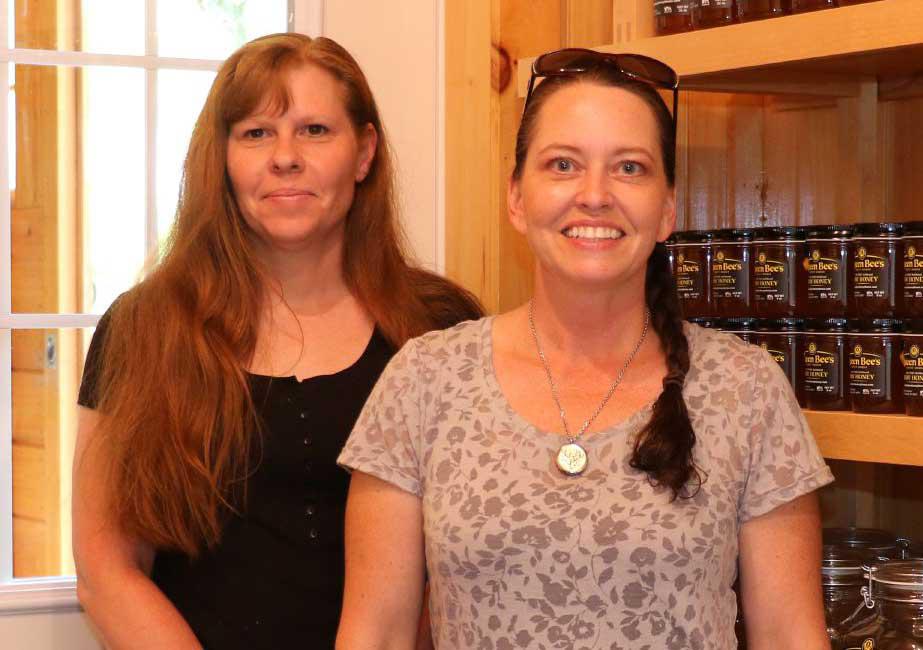
The A Team: (left) Becky Whitmire, future cafe/market manager;
(right) Robin Kaminstein, owner of QB Honey House and new cafe/market.
I must comment on a product I enjoy! While trying to cut my sugar intake on a daily basis, I decided to use honey instead. Love Queen Bee's Honey! Natural and healthier for me! Thanks Queen Bee's Honey!
We are often asked "What is the difference between raw and regular honey?"
The difference lies in how the honey is processed. Raw honey is collected onsite from more than 30 hives, strained, and bottled with a very low temperature to keep it in enough of a liquid phase to be managed. Regular, or so called "pure" honey, is heavily processed during the pasteurization phase. Pasteurization destroys many vitamins, minerals, amino acids and enzymes, which decreases the honey's nutritional value.
Raw honey comes directly from the bee hive and contains bee pollen in minute quantities. Bee pollen is considered one of nature's most nourishing foods, packed with protein and amino acids. Bee pollen is recommended by many studies to improve unbalanced nutrition, vitality and energy. It is also used in products that claim success for weight control, health, beauty, allergies and anti-aging. All of these qualities are lost with the removal of bee pollen. Regular honey does not contain bee pollen.
Regular honey is usually pasteurized (heated over 150 degrees F), and cooled rapidly for easy filtering and bottling, making it appear cleaner. Pasteuration kills any yeast cells in the honey, prevents fermentation and destroys nearly 100% of vitamins, minerals and anti-oxidants.

The 'Waggle Dance' or honey bee dance enables worker bees to inform her sisters about great locations of food and water, or a new home.

Honey bees have been around longer than humans. There is fossil evidence from 150 million years ago.

Honey bees have been trained to act as bomb detectors! Scientists have trained them to react to small amounts of chemicals found in explosives.

Scientists have discovered that honey bees are able to 'vote' when making decisions about where the colony should create a new nest site.

Bees understand relationships (same/different & above/below) which rely on relationships between objects rather than physical features of objects.

Honey bees are most active between 60 - 100 F, although they can forage in temperatures as low as 55 F.
Raw honey has many health benefits.
Several studies have linked honey with weight loss and lower blood sugar. A study from the University of Wyoming found that honey can activate hormones that suppress the appetite.
Since bees gather pollen from your local region, by consuming local raw honey, you consume that pollen. After some time, an allergy sufferer may become less sensitive to this pollen (immunotherapy) and experience less seasonal allergy symptoms. When moving from one region to another, it can be helpful to consume raw honey before your move to assist in lowering allergy reactions to pollen.
Raw honey contains 80% natural sugars, 18% water and 2% of minerals, vitamins, pollen and protein. Called the "perfect running fuel," raw honey provides an easily absorbed supply of energy, idea for energetic morning starts and for post-exercise refueling.
Studies have demonstrated that a daily does of raw honey raises levels of anti-oxidants in the body, which block free radicals that cause disease and boosts the immune system. Studies indicate that raw honey can reduce the risk of heart disease and cancer.
By consuming raw honey before bedtime, the liver's glycogen supply is replenished and prevents the brain from triggering a crisis search for fuel, which can disturb sleep.
Raw honey is effective in treating coughs. A single dose of honey can reduce mucus secretion and coughts. For a cough, a half teaspoon to two teaspoons of raw honey at bedtime is recommended. CAUTION: Do not give raw honey to children under the age of one.

According to Environment America, millions of bees are dying off, with alarming consequences for our environment and our food supply. We rely on bees to pollinate everything from almonds to strawberries to the alfalfa used to feed dairy cows. What happens if the bees disappear? It's simple: No bees, no food.
Environment America explains that we rely on bees to pollinate 71 of the 100 crops that provide 90% of most of the world's food. In recent years, beekeepers report they're losing on average 30% of all honeybee colonies each winter -- twice the loss considered economically tolerable.
EA further explains the cause:
"Scientists point to several causes behind the problem, including global warming, habitat loss, parasites and a class of bee-killing insecticides known as neonicotinoids (or neonics).
"When seeds are treated with neonics, the chemicals work their way into the pollen and nectar of the plants -- which, of course, is bad news for bees and other pollinators. Worse, for the bees and for us, neonics are about 6,000 times more toxic to bees than DDT."
LEARN MORE